
All categories
Featured selections
Trade Assurance
Buyer Central
Help Center
Get the app
Become a supplier

(3037 products available)




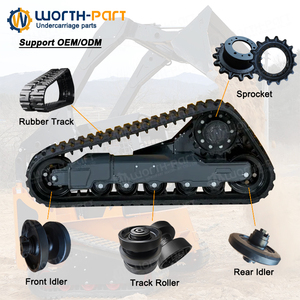




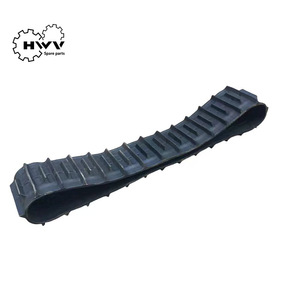
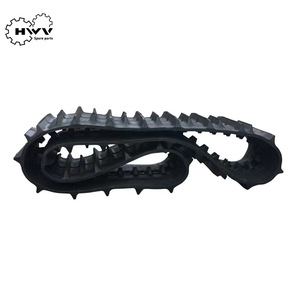













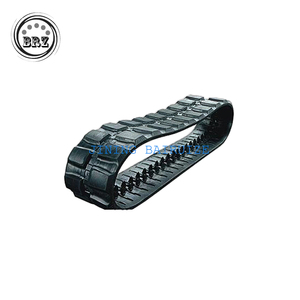
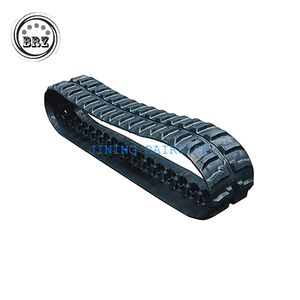


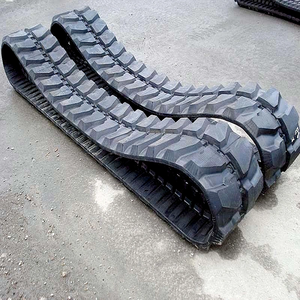




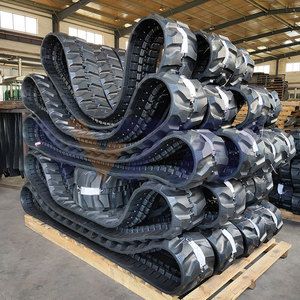





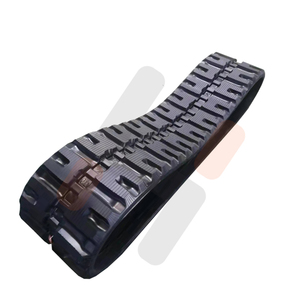





Bobcat rubber track is an important component of Bobcat skid steer loaders, compact excavators, and other tools. It has diverse types designed to meet specific equipment and applications.
Wide Flotation Tracks
Wide flotation tracks are typically wider than standard tracks. They are also known as wide rubber tracks for skid steers. Bobcat rubber track works well for low ground pressure and weight distribution. Besides, they offer excellent stability, traction, and mobility in soft or loose terrain. Using wide flotation tracks on equipment, such as snowmobiles or ATVs, can improve performance.
Multi-Bar Tracks
Multi-bar tracks are also called Bobcat mini tracks. They come with distinct spaced-out lugs or bars along the track. This type of Bobcat rubber track is ideal for use on equipment that needs high traction on various terrains. It works well in construction, agriculture, and off-road applications. The benefits of using multi-bar tracks include improved ride quality and reduced turf disruption.
General Purpose Tracks
Generally, modified or standard tracks can be referred to as general-purpose tracks. General tracks offer versatility for many applications. They are suitable for use on skid steers and other equipment that operate on various terrain types. Also, they are built to offer decent traction and stability on terrain that ranges from paved surfaces to loosely packed grounds.
Heavy Duty Tracks
Heavy-duty tracks are specifically manufactured from thicker rubber compounds. They are designed to provide extended service life in dealing with abrasive and rough terrains. Heavy-duty tracks are perfect for bobcats working in more demanding construction and mining environments. They have superior cut-and-wear resistance compared to standard rubber tracks.
Exact measurement, weight capacity, and performance details for Bobcat rubber tracks differ widely according to their particular job and machine.
Track Size
The size of Bobcat rubber tracks, normally stated as width x pitch x circumference (in inches), varies with different machines and jobs. Typical sizes can range anywhere from 250 x 450 mm to 400 x 1016 mm. To guarantee a proper and effective fit for the machine, the exact track size must match its requirements.
Weight Capacity
Bobcat rubber tracks are designed to support specific weight capacities. This capability depends on factors such as track width and the machine's overall design. To avoid premature wear and tear, reduced performance, and potential breakdowns, it is crucial to stay within the designated weight capacity as prescribed by the manufacturer.
Longevity
Bobcat rubber tracks are often made from a blend of rubber and other materials designed for high tear resistance, which extends their lifespan. The track's longevity can depend on several factors, including the material used, how often they are used, the surface they are used on, maintenance habits, and machine settings. To protect them and maximize their longevity, things like regular monitoring, proper tension adjustment, and more can help track materials resist damage and wear.
Maintaining Bobcat rubber tracks properly can prolong their lifespan and ensure good machine performance. Here are a few practical tips.
Bobcat rubber tracks are useful in diverse scenarios. Some of them are as follows:
Earthmoving projects
Bobcat tracks are ubiquitous in earthmoving projects. They can accomplish diverse earthmoving tasks, such as excavating large volumes of earth, moving heavy blocks, and grading and leveling a land area. Bobcat track loaders provide the required versatility and power for effectively shaping the earth to build foundations for structures.
Construction sites
Bobcat track loaders and excavators play a vital role in the land-clearing phase of site preparation for building projects. Additionally, rubber tracks provide the mobility and lifting capacity required for material handling tasks, such as loading, unloading, and stacking construction materials and equipment.
Snow removal
Bobcat tracks can efficiently clear public roads and private driveways of snow during the winter to ensure safe passage. These machines can also be used to remove excess snow accumulated around the rooftops of structures to prevent the collapse of the roof due to snow weight.
Agriculture
Bobcat rubber tracks are useful in diverse agricultural tasks. They can be used to clear fields by removing trees, stumps, and rocks. Bobcat rubber-tracked tractors can also be used for soil preparation by tilling and trenching with attachments. In large farms with greenhouses, Bobcat tractors can be used for material handling. Also, Bobcat trackLoader can be used for irrigation trenching.
When selecting Bobcat rubber tracks, several key factors must be considered to ensure the right fit for the machinery and operational needs.
Machinery Compatibility:
Verify that the track matches the specific model and year of the Bobcat machine. Even within the same brand and model, variations may exist due to changes in design over time.
Track Size:
The length, width, and height of the track must be appropriately sized to fit the machine. An ill-fitted track can lead to performance issues, including premature wear or damage to the machine.
Track Pattern:
Select a tread pattern that suits the work environment and desired traction. For example, a self-cleaning tread pattern may be more suitable for muddy or loamy terrain.
Weight Rating:
Ensure that the rubber track's weight rating can adequately support the bobcat tracked skid steer load capacity, including any attachments and materials that may be added to the skid steer.
Quality and Warranty:
Buy from manufacturers or suppliers with a good reputation to ensure track quality. A solid warranty can provide additional protection and peace of mind.
Price vs. Lifespan:
Consider the balance between cost and track lifespan. Investing in a high-quality track may be more economical in the long run due to reduced replacement frequency and improved durability.
Installation Process:
Consider the installation process and determine whether professional installation will be required. Some tracks may offer easy-to-install designs, while others may require professional expertise and special equipment to ensure a proper fit.
Q: Can worn-out Bobcat tracks be repaired?
A: Not recommended. Worn-out Bobcat track digging frame rubber may have large cracks, chunks, and other severe damages that may cause the track to break suddenly. If it breaks while the machine is working, it can damage other parts. Changing worn-out tracks is a better and safer option.
Q: How to know when to change Bobcat tracks?
A: Bobcat tracks will wear out eventually, even if they are not damaged. Look for damage on the track's surface, such. As cracks, breakages, or chunk loss, which can indicate that the track is not running smoothly on the wheel. Other indicators that Bobcat tracks are due for change are deep gouges, excessive stretching of the track loop, or slide marks on the drive sprockets. If any of these thing happen, it means the track is not running smoothly with the machine.
Q: Is it difficult to change Bobcat rubber tracks?
A: Not really. With the right tools, guidance, and safety measures, changing Bobcat rubber tracks can be a simple and straightforward process. Bobcat dealers and manufacturers offer specific installation instructions for different models.
Q: Do Bobcat tracks consume fuel?
A: This is a major concern for business owners and machine users. Rubber tracks can improve fuel efficiency by reducing the energy needed to propel the machine. They provide better traction and decrease rolling resistance compared to rubber tires. However, some factors influence fuel consumption, such as track size, machine weight, engine type, terrain, and operating conditions. Selecting the right tracks to match the Bobcat machine will help to improve fuel efficiency.